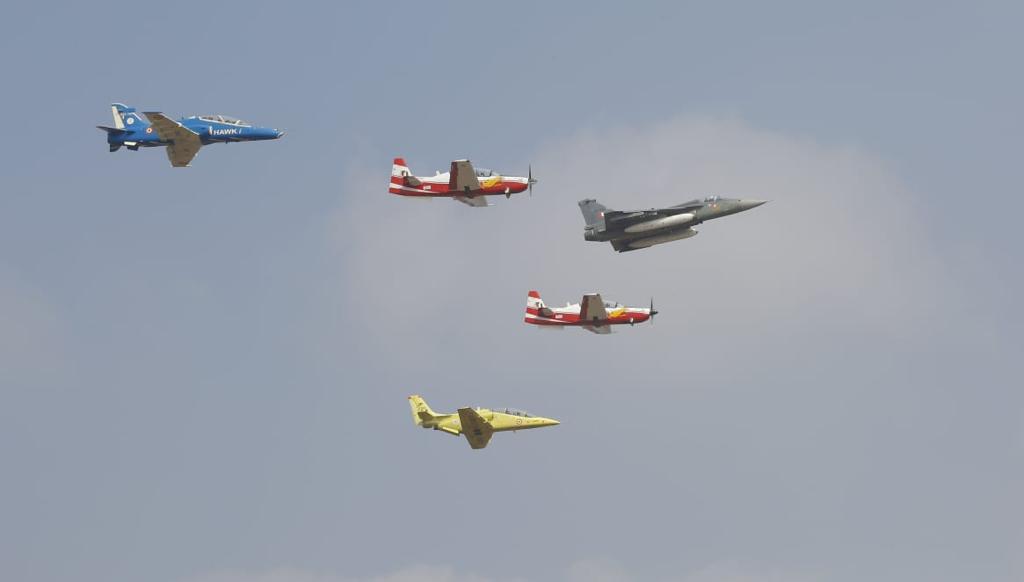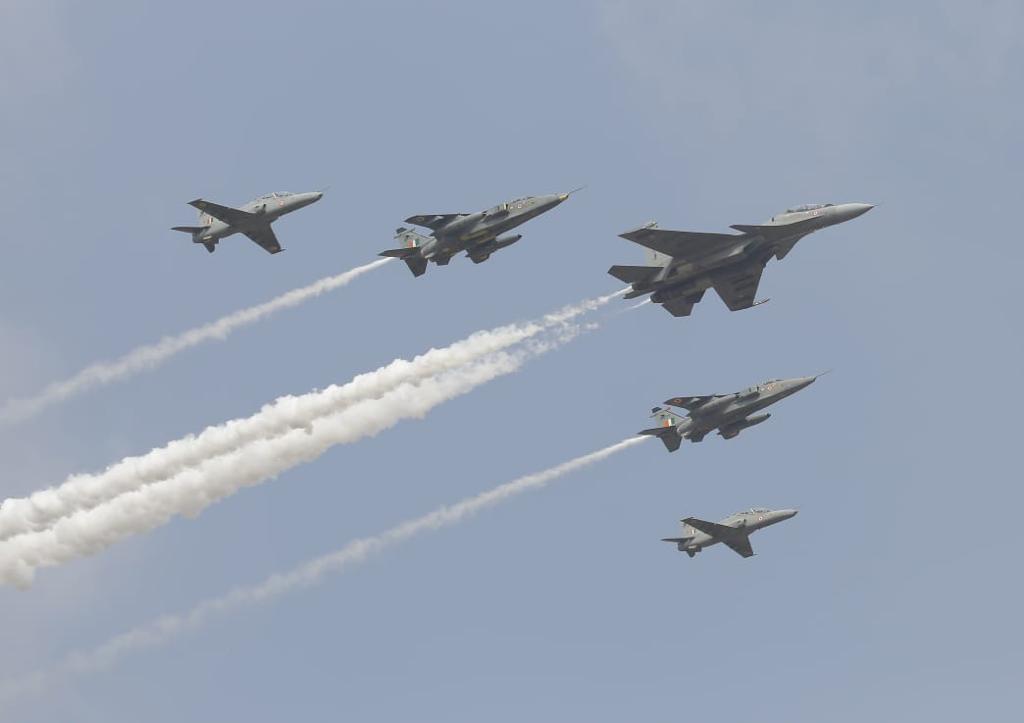Bengaluru, NFAPost: Aero India 2021, the 13th Edition of the high-profile event kicked off on 3 February at the Yelahanka Air Force Base, Bengaluru. It is the first hybrid air show event in the history of aviation industry with the sole mantra of embracing the principles of ‘Atma Nirbhar Bharat’.
Air Show Event Riding the Vision of Atma Nirbhar Bharat
The Aero India show took off with fewer than expected participants, encompassing nearly 600 exhibitors with just 78 foreign ones taking part in the three-day event.

According to the organisers, the public air show event displayed nearly 40 aircrafts from the IAF’s stable including the world’s lightest Light Combat Aircraft Tejas, the Jaguar, C-17 Globemaster and Embraer sporting the Airborne Early Warning and Control System.

A refurbished Dakota aircraft and the B-1B Lancer, the versatile long-range heavy bomber from Ellsworth Air Force Base in South Dakota (US) also took part in the inaugural air show. The bomber aircraft had completed a 26-hour flight from its base to the show.
Growth Forecast and Future Challenges for Civil Aviation Sector
The aerospace event also paved the way for a host of seminars from eminent personalities including the Ministry of Civil Aviation & FICCI from the aerospace and defense industries. A team of expert panelists took turns to discuss the growth forecast and future challenges facing the Civil Aviation industry in the coming years.
Remi Maillard, president and managing director, Airbus India and South Asia, has shed some light on the resilience and revival of the aviation sector amid the challenges posed by the Covid-19 pandemic.
“We have been tested in a hard way with increasing complexities and yet we adopted. Discovered resilience and ensured highest levels of safety while facilitating international traffic amid the pandemic,” Maillard says in his opening statement.
Maillard points out that there is enough opportunity in crisis for India to turn into an international hub. He reasons out that it is a central hub with a major competitive advantage for long-term growth and development.
“64 percent of global traffic goes through India and this presents a great opportunity to create a good ecosystem for Indian aviation growth with feasible aircraft,” he adds.
He estimates that the current set of 100 airports can be further expanded to 200 airports by 2040 by adopting leasing services and adopting zero-emission airliners on a grand scale.
Speaking on the occasion, Amitabh Khosla, Country Director India @IATA, had this to say: “Due to Covid-19, we have faced the worst loss in 2020 in the history of the aviation industry. Recovery will be uneven with domestic services to recover first while international ones taking a longer time. However, full recovery is possible by 2024.”
Anand Bhaskar, CFO @AirWorks, sounds upbeat about the revival and resurgence of the aviation sector in the coming years. Speaking about the tax exemptions offered to the Indian MRO and its growth prospects, here is what Bhaskar explained:
“The Govt. has reduced the GST from 18 to 5 percent while also reducing rentals on airport hubs to spur growth and encourage the revival of Indian MRO. India’s aviation growth is projected to mirror China’s growth in the next two decades. Aviation contributes to 2.5 percent of the Indian economy since 2019 with MRO projected for $5 million contributions in the near future.”
The other speakers of the expert panel talked about how the use of sustainable biofuels for both civil and defence beyond 2025 would help the ailing aviation industry.
They also highlighted the importance of adopting the technology transfer from western and Russian OEMs to domestic fleet in order to attract more investors as well as promote international travel via India, besides promoting the lucrative Air Cargo business.
“Cargo business is still in pre-Covid levels at 90% operational engagement while the civil aviation engagement is down by 40%,” said Pradeep Singh Kharola, Karnataka Cadre (Aviation Infrastructure).
The expert panelists also raised concerns with the lack of skill competencies and R&D innovation hubs, whose upgradation could dramatically improve the growth prospects of the aviation sector in India.





